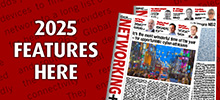08 August 2023

Colocation can enable real-time processing of enormous volumes of data to empower IoT applications and help address the IT skills shortage. The right provider can also foster IoT innovation, such as the development of smart cities and bridge the gap between the digital and physical worlds. Bo Ribbing, senior director & head of IoT for KDDI Europe, a division of Telehouse’s parent company, explains how colocation is critical to the success of IoT innovation for organisations.
Technology innovations have transformed industries. Cloud computing has made the instantaneous access of data possible, and automation has led to newfound efficiencies. These developments have opened several new opportunities for businesses, and the pace of change is unlikely to slow as superfast 5G begins to reveal its true potential. Enter the age of the Internet of Things (IoT), which has allowed organisations to connect a range of devices across diverse local and global networks.
This technology helps connect the digital sphere to the real world we live in, providing the opportunity for more personalised customer experiences, enhanced operational efficiencies and faster processes. These abilities will only become more accessible as the number of connected IoT devices worldwide grows to over 29 billion by 2030.
Businesses need to consider several factors to truly harness these capabilities, however. To start with, the appropriate infrastructure foundations must be established. To make this happen, systems need to be moved to the cloud and legacy IT infrastructures need to be modernised. Organisations can then make the best use of connected devices and IoT applications.
The potential of data
A key benefit of an IoT-driven business is the ability to access low cost and low latency application performance, but this can be difficult to bring to fruition. To gain the most from incredibly powerful IoT applications, a solid infrastructural foundation must enable enormous volumes of data to be ingested and processed in real-time. The other consideration is bandwidth, which must be sufficient to bring big data into the fold for analysis and help drive efficient decision-making. As IoT data processing increasingly moves to the edge, this ability will become even more important.
IoT implementation as an undertaking is both complex and unique and is usually hindered by two key obstacles. Legacy systems, which are held back by scalability and flexibility, typically prove to be a consistent barrier for businesses. For example, products brought into the organisation over ten years ago will likely lack the agility required to process, store, and analyse the huge volumes of unstructured data that require attention. Simultaneously, skills shortages are leaving wider gaps that prevent the business from fully engaging with IoT technology and reaping the benefits.
In this context, the gaps in the IoT landscape are likely to feel more like chasms. To bridge them, today’s data centre colocation providers are ideally placed to deliver a broad spectrum of IoT solutions that business needs. For example, they can enable strategies to manage, store and organise big data and low-cost connectivity, as well as provide a helping hand to steer businesses through the implementation as needed.
The evolution of colocation
Colocation data centres are a pivotal cog in the IoT machine. They help organisations realise the unique and far-reaching benefits that IoT technologies can provide. In a practical sense, colocation can offer and maintain the connections needed to support IoT. It can also enable businesses to raise the drawbridge to protect against increasingly common and sophisticated cyber threats such as malware and ransomware.
The value of colocation is evolving. Beyond benefits such as the secure storage of critical data and the ability to access strategic connections, it’s also transforming the IoT world. Organisations can access efficient and flexible means to both manage and analyse the huge amounts of IoT sensor data required to work with supply chains, power grids, factories, distributed products, and cities.
Smart cities are no longer a vision of the future, and utilities, services, security, and transportation are all being brought together by IoT technologies. The UK has taken significant steps towards smart city development by investing £5 billion in 2020 to make gigabit-capable broadband available nationally, with a further £50 million in 2021-22 to demonstrate the benefits of 5G.
For the businesses that have taken steps to bring IoT into their wider models, network connectivity will need to grow to match requirements. For example, an interconnected mesh of both international and regional access hubs will be needed to enhance hybrid cloud strategies via colocation networking. The ultimate objective will be the transferring of data across the shortest path via the most cost-effective means.
Choosing the right data centre provider
A carefully chosen colocation data centre provider will benefit organisations in several ways.
Firstly, they will help empower teams to push resources out to the edge and bring the capabilities of the data centre to customers thanks to cloud and IoT innovations. This will prove to be pivotal to business success in the years to come as organisations require instant access to critical data.
With most IoT platforms and applications today consisting of ‘as-a-service’ and ‘cloud first’ innovations, any business looking to benefit from scalability will need to move its data into the cloud. This is due to the rapidly growing number of IoT platforms and application providers in operation today, with this level due to expand in the future.
Senior leaders and their organisations can draw on the capability of trusted colocation providers to both capitalise on storage and compute capabilities in the cloud, but also on the ‘anytime, anywhere’ interconnectivity to as-a-service providers as needed. Businesses are then ideally suited to achieving the necessary scale to bridge the gap between the digital and physical worlds and foster business value for the future with IoT.










